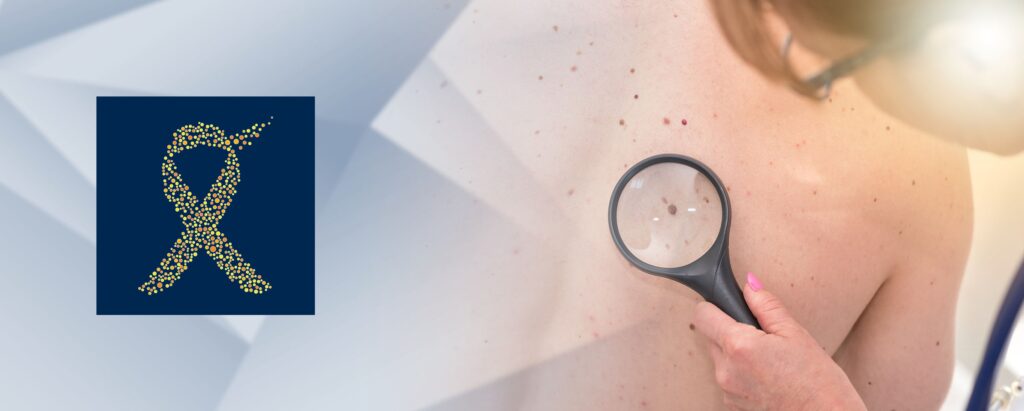Top 5 Reasons Why Small Businesses Need Insurance As a...
Read More
Shedding Light on Melanoma: Understanding and Spreading Awareness
May 3, 2024
May is Melanoma Awareness Month, a time dedicated to shedding light on one of the deadliest forms of skin cancer. Melanoma is a serious health concern that affects people of all ages, races, and skin types. Despite its prevalence, many are still unaware of the risks associated with melanoma and the importance of early detection. Let’s look at the key facts about melanoma, discuss risk factors, prevention strategies, and emphasize the significance of raising awareness.
Understanding Melanoma
- Asymmetry: One half of the mole or lesion does not match the other half.
- Border: The edges are irregular, blurred, or poorly defined.
- Color: The color is uneven, with shades of brown, black, blue, red, or white.
- Diameter: The size of the mole is larger than a pencil eraser (about 6mm or 1/4 inch).
- Evolution: Any changes in size, shape, color, or elevation over time should be monitored closely.
Risk Factors
- Excessive Sun Exposure: Prolonged exposure to ultraviolet (UV) radiation from the sun or tanning beds.
- Fair Skin: People with fair skin, light eyes, and freckles are at higher risk.
- Family History: A family history of melanoma or a personal history of previous skin cancer.
- Weakened Immune System: Immunosuppression due to certain medications or medical conditions.
- Moles: Having a large number of moles or atypical moles (dyplastic nevi).
Prevention Strategies
- Sunscreen: Apply broad-spectrum sunscreen with an SPF of 30 or higher, even on cloudy days.
- Seek Shade: Limit sun exposure during peak hours (10 a.m. to 4 p.m.) and seek shade whenever possible.
- Protective Clothing: Wear protective clothing, including hats, sunglasses, and long sleeves, when outdoors.
- Avoid Tanning Beds: Avoid the use of tanning beds and sunlamps, which emit harmful UV radiation.
- Regular Skin Checks: Perform monthly self-exams and schedule annual skin screenings with a dermatologist.
Spreading Awareness
- Educational Campaigns: Share informative resources, infographics, and educational materials about melanoma prevention and detection.
- Social Media Awareness: Use social media platforms to share personal stories, facts, and tips about melanoma awareness.
- Community Events: Organize or participate in community events, fundraisers, or walks to raise awareness and support melanoma research and advocacy.
- Encourage Regular Screenings: Encourage friends, family, and loved ones to schedule regular skin screenings with a dermatologist, especially those at higher risk.
Together, we can make a difference in the fight against melanoma by raising awareness, promoting prevention strategies, and supporting efforts to improve early detection and treatment options. Let’s shine a light on melanoma and work towards a future where skin cancer is no longer a life-threatening disease.
Sablich Insurance Group is licensed in both Pennsylvania and New Jersey.Bonfire Safety Tips for Autumn: Protecting Your Home from Fire Hazards
Bonfire Safety Tips for Autumn: Protecting Your Home from Fire...
Read MoreGrill Cleanups: Essential Steps to Protect Your Grill During Winter and Prevent Spring Fires
Grill Cleanups: Essential Steps to Protect Your Grill During Winter...
Read MoreContact
-
300 Brookside Avenue
Building 4, Suite 125
Ambler, PA 19002 - 215.402.7021
- [email protected]
Site Map
Follow Us
in Pennsylvania and New Jersey



